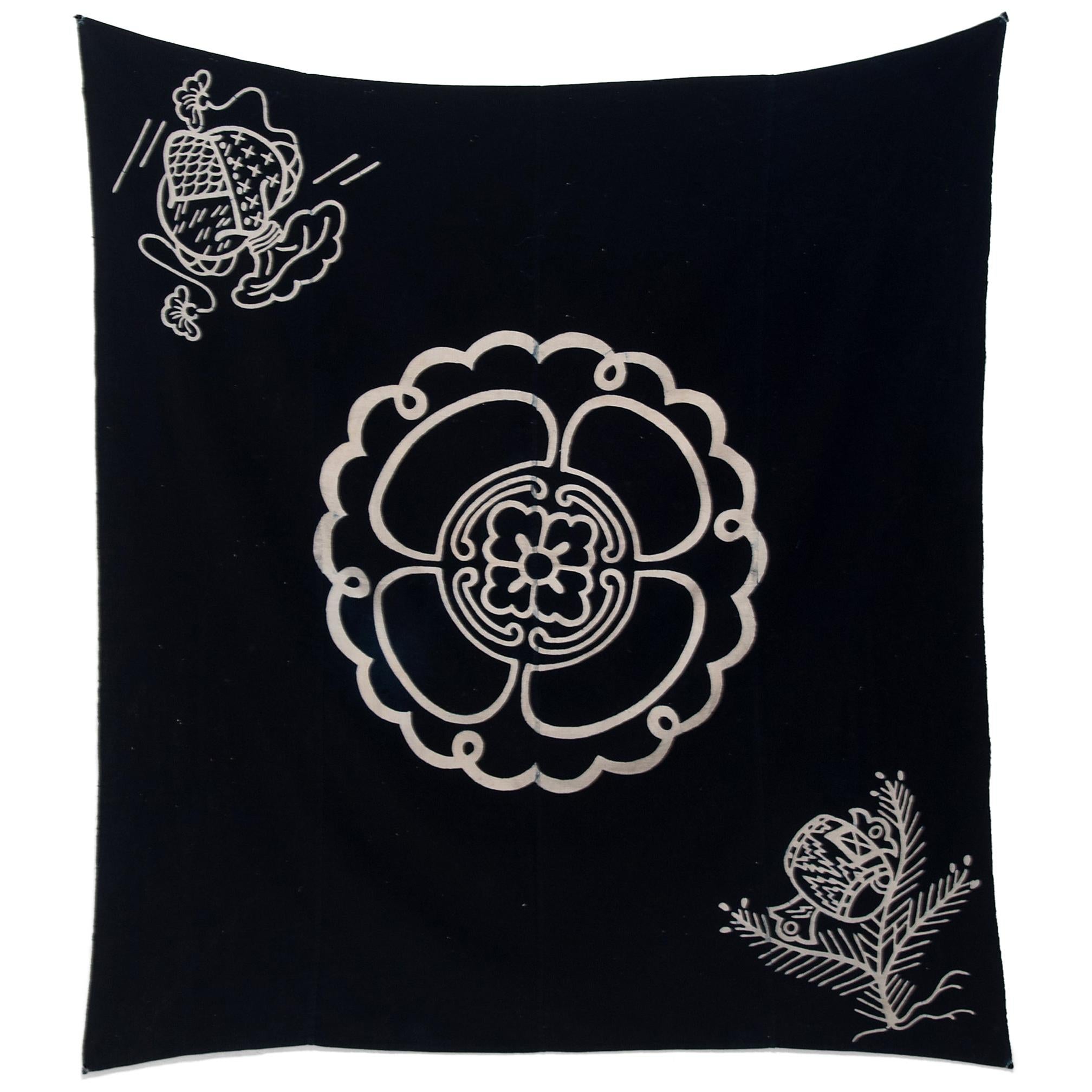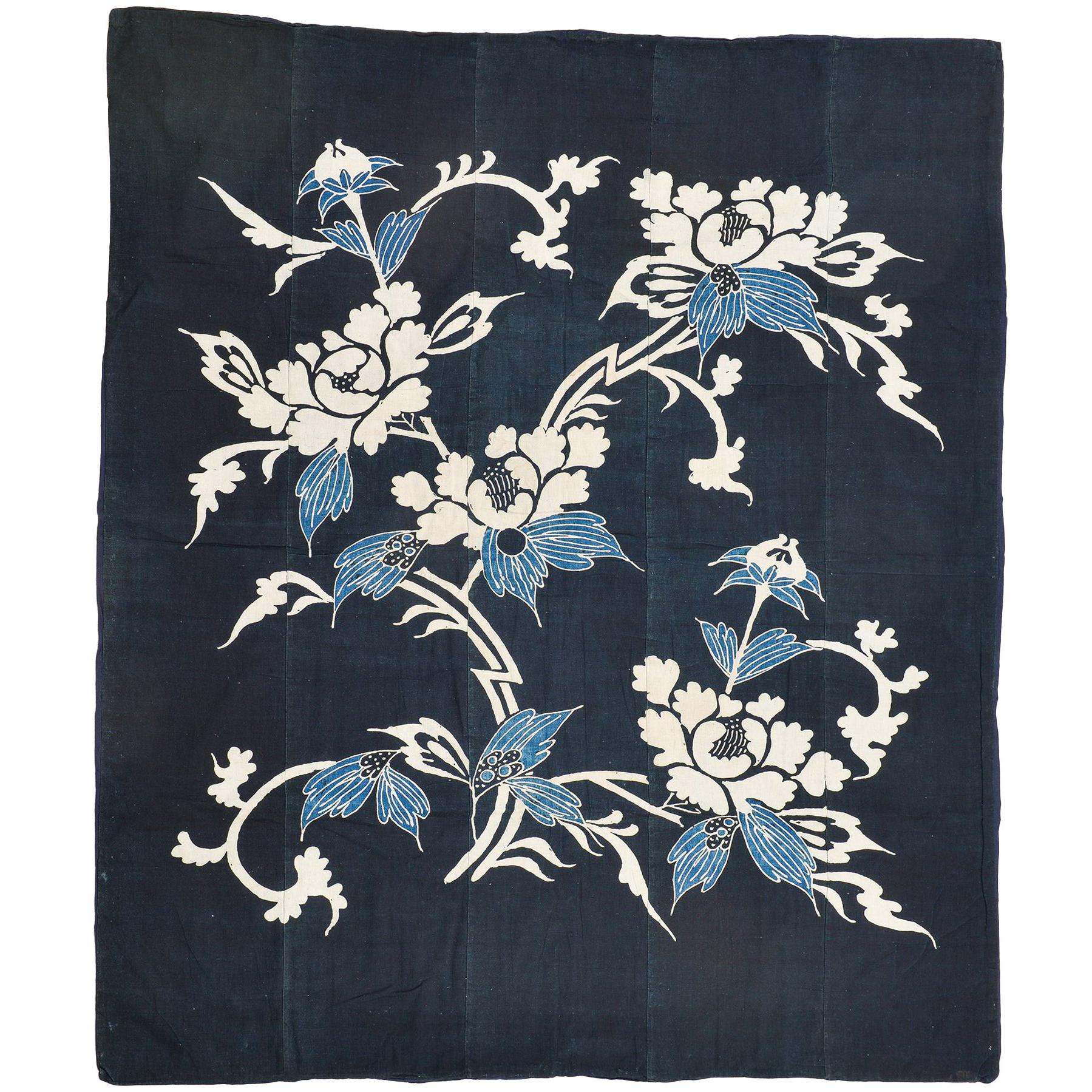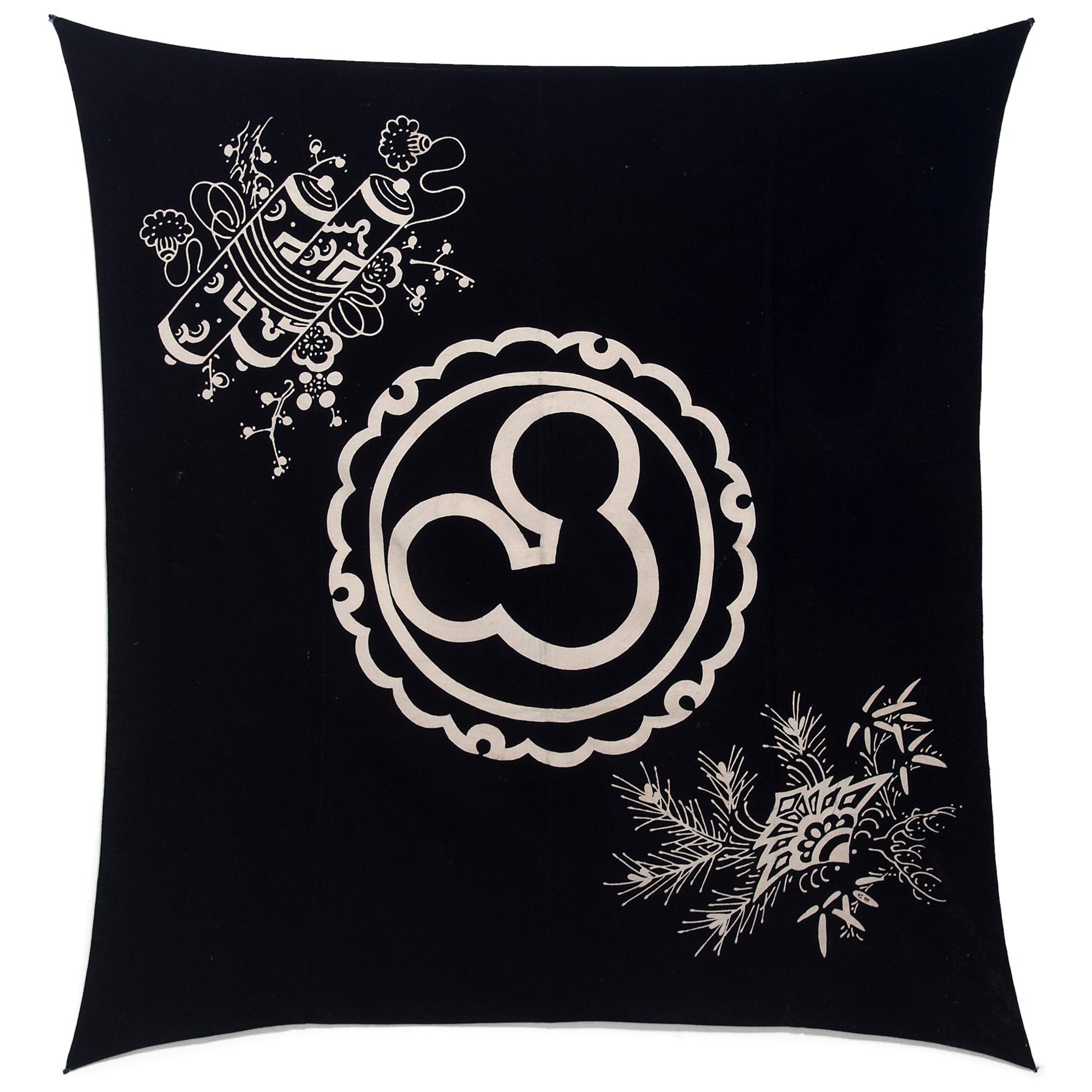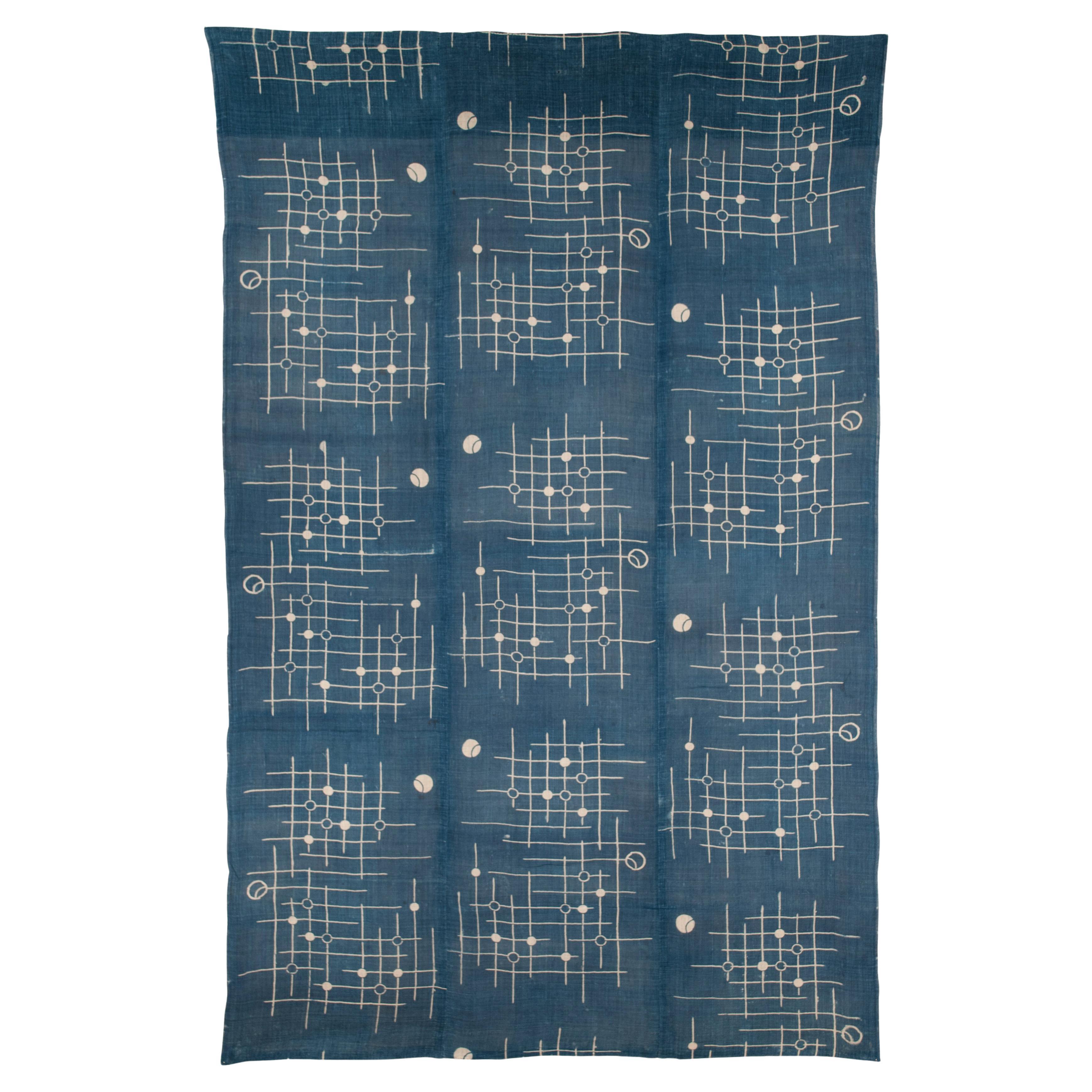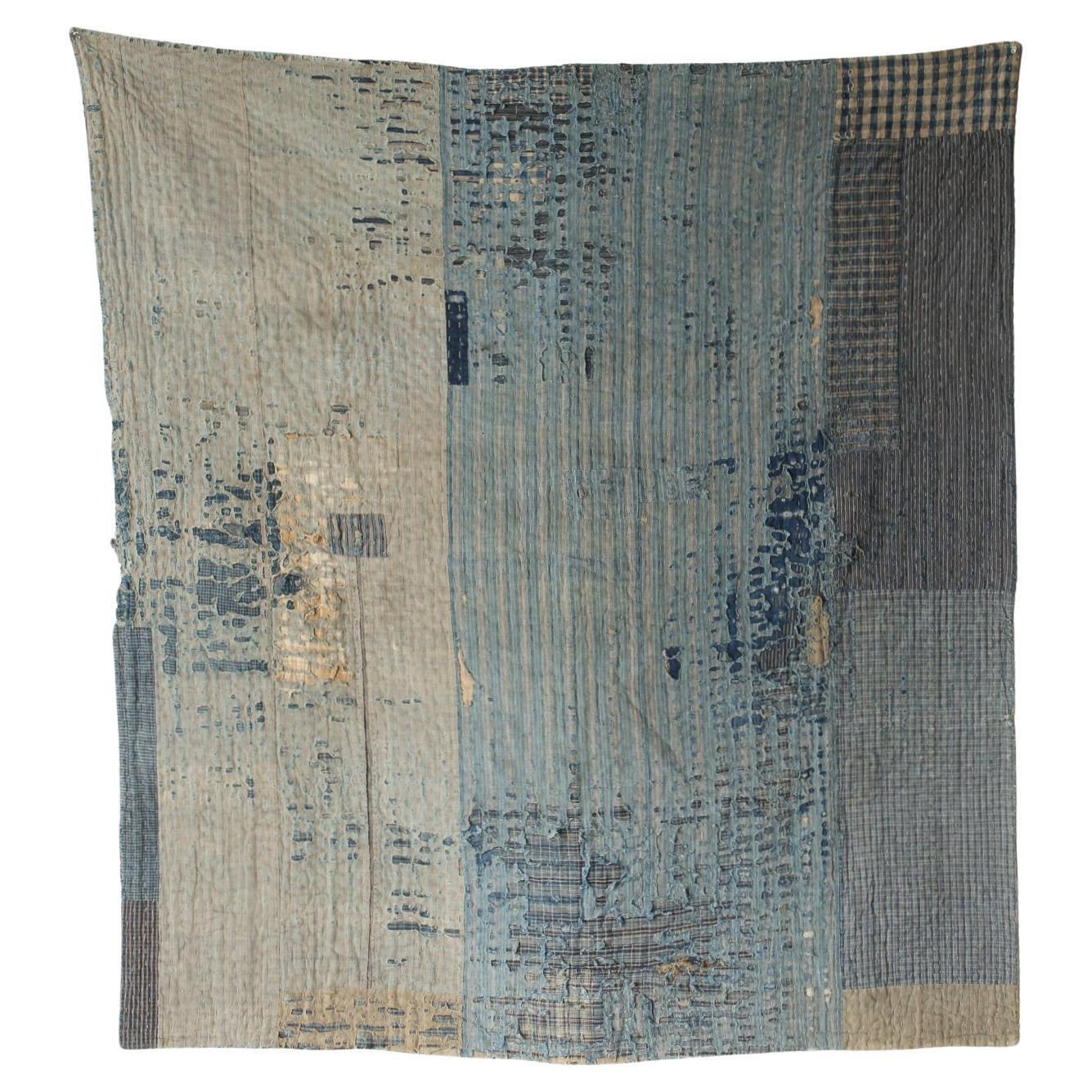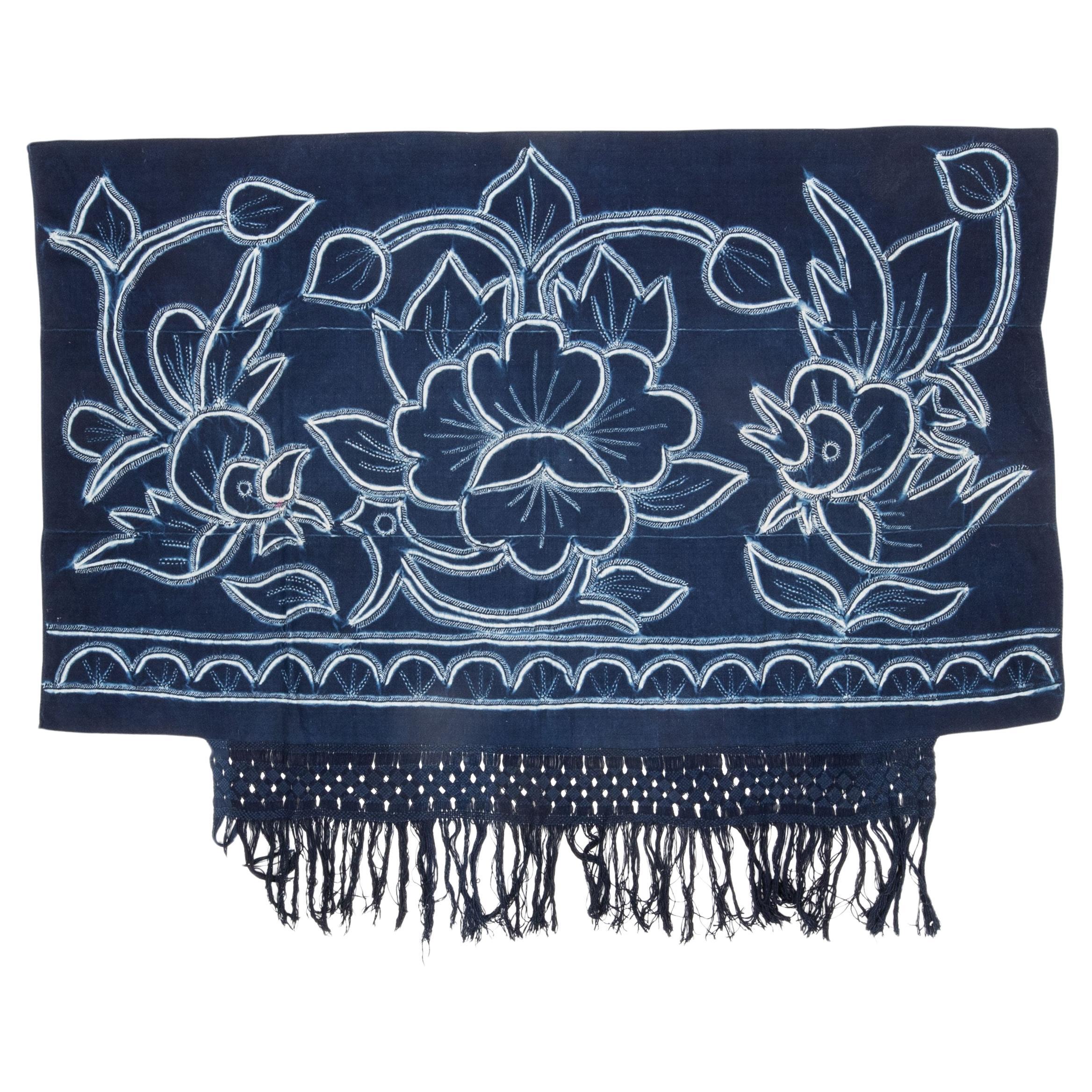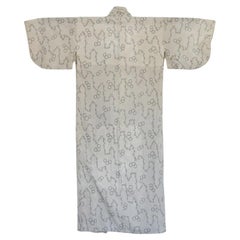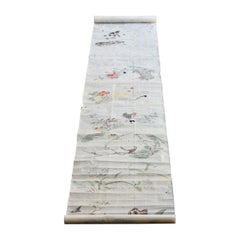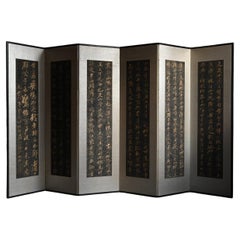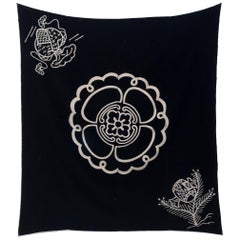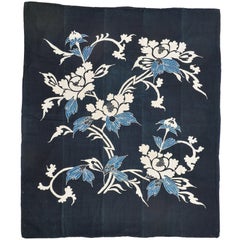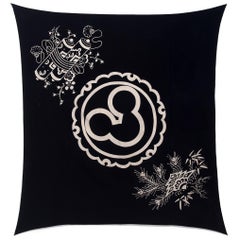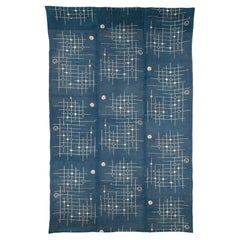Items Similar to Japanese Indigo Dyed Old Embroidery Cloth / Japanese Toy Pattern / 1912-1960
Want more images or videos?
Request additional images or videos from the seller
1 of 17
Japanese Indigo Dyed Old Embroidery Cloth / Japanese Toy Pattern / 1912-1960
$1,000
£759.32
€868.34
CA$1,397.15
A$1,553.93
CHF 811.41
MX$18,909.68
NOK 10,363
SEK 9,718.66
DKK 6,480.78
Shipping
Retrieving quote...The 1stDibs Promise:
Authenticity Guarantee,
Money-Back Guarantee,
24-Hour Cancellation
About the Item
It is a Japanese indigo dyed antique cloth.
It calls its name "fu-ro-shi-ki".
Originally used in the dressing room of the public bath "furo" during the Edo period.
The purpose is to spread this cloth and wrap your clothes.
Over time, it has become a tool for wrapping and carrying things.
I think it was made from the Taisho era to the middle of the Showa era (1912-1960).
This embroidered pattern is inspired by the traditional Japanese toy "ka-za-gu-ru-ma".
This is a toy that has wings like a windmill attached to the tip of a stick of about 30 cm, and the wings rotate by running or swinging its arms.
It is a toy from the Showa period in Japan.
It is a cloth with only the image of its wings embroidered.
The condition is very good.
It is very beautiful when hung on the wall.
it's recommended!
- Dimensions:Height: 59.06 in (150 cm)Width: 57.09 in (145 cm)Depth: 0.04 in (1 mm)
- Style:Showa (Of the Period)
- Materials and Techniques:
- Place of Origin:
- Period:
- Date of Manufacture:1912-1960
- Condition:
- Seller Location:Sammu-shi, JP
- Reference Number:1stDibs: LU5487225920062
About the Seller
5.0
Gold Seller
Premium sellers maintaining a 4.3+ rating and 24-hour response times
Established in 2015
1stDibs seller since 2020
1,602 sales on 1stDibs
Typical response time: 6 hours
- ShippingRetrieving quote...Shipping from: senzoku, Japan
- Return Policy
Authenticity Guarantee
In the unlikely event there’s an issue with an item’s authenticity, contact us within 1 year for a full refund. DetailsMoney-Back Guarantee
If your item is not as described, is damaged in transit, or does not arrive, contact us within 7 days for a full refund. Details24-Hour Cancellation
You have a 24-hour grace period in which to reconsider your purchase, with no questions asked.Vetted Professional Sellers
Our world-class sellers must adhere to strict standards for service and quality, maintaining the integrity of our listings.Price-Match Guarantee
If you find that a seller listed the same item for a lower price elsewhere, we’ll match it.Trusted Global Delivery
Our best-in-class carrier network provides specialized shipping options worldwide, including custom delivery.More From This Seller
View AllOld Japanese Kimono / 1912-1945 / Wall Hanging Decoration / Tapestry
Located in Sammu-shi, Chiba
I think this is a kimono woven from the Taisho era to the early Showa era (1912-1945) in Japan.
It is a modern design.
In the Taisho era, various things were made with reference to...
Category
Early 20th Century Japanese Taisho Tapestries
Materials
Cotton
Japanese antique sketch scroll / 1800-1900 / Flower, bird and animal paintings
Located in Sammu-shi, Chiba
This is a rough sketch of a Japanese painting drawn around the late Edo period to the early Meiji period (1800-1900) in Japan.
A picture is drawn by sticking and connecting short pi...
Category
Antique 19th Century Japanese Edo Paintings and Screens
Materials
Paper
Antique Japanese Buddhist pagoda hanging scroll /Buddhist painting/Edo
Located in Sammu-shi, Chiba
This is a slightly different Buddhist painting believed to have been created by a Japanese temple monk during the Edo period (late 17th to 19th century). Rendered in ink on paper, th...
Category
Antique 18th Century Japanese Edo Paintings
Materials
Paper
Old Japanese woodblock print folding screen/room partition/object
Located in Sammu-shi, Chiba
This is a woodblock-printed folding screen made in Japan during the Showa period, featuring writings by a Chinese calligrapher.
It is a passage from a story written by a famous Chin...
Category
20th Century Japanese Showa Paintings and Screens
Materials
Paper
Japanese antique bamboo woven basket/wall hanging vase/1868-1920/Mingei
Located in Sammu-shi, Chiba
This is a woven bamboo basket made in Japan from the Meiji to Taisho periods (1868-1920).
I don't know if the baskets actually used by farmers were repurposed as flower vases, or if ...
Category
Early 20th Century Japanese Meiji Decorative Art
Materials
Bamboo
Japanese antique wooden blocks/1800-1920/paper charms/Buddhist art
Located in Sammu-shi, Chiba
This is a wooden woodblock produced in Japan from the late Edo period to the Taisho period (about 1800s to 1920s). The material used is something like beech wood, and the wood is dec...
Category
Antique Late 19th Century Japanese Edo Wall-mounted Sculptures
Materials
Beech
You May Also Like
Vintage Japanese Indigo Folk Kamon Textile
Located in Chicago, IL
Dating to the mid-20th century, this vintage Japanese textile is a folk example of traditional stencil dyed fabric, known as katazome. Richly...
Category
Mid-20th Century Japanese Textiles
Materials
Cotton
Japanese Indigo Antique Boro Futon Cover or Wall Panel
Located in Alessandria, Piemonte
Rare perfect antique collection Japanese Indigo Boro Futon cover : also to use.
The rare antique boros are now valued as pieces of art, therefore they are...
Category
Mid-20th Century Japanese Japonisme Textiles
Materials
Cotton
$2,492 Sale Price
35% Off
Vintage Japanese Indigo Folk Kamon Textile
Located in Chicago, IL
Dating to the mid-20th century, this vintage Japanese textile is a folk example of traditional stencil dyed fabric, known as katazome. Richly...
Category
Mid-20th Century Japanese Textiles
Materials
Cotton
Early 20th Century Japanese Linen Go-Board Pattern Futon Cover
Located in Point Richmond, CA
Early 20th Century Japanese linen go-board pattern futon cover
A unique example of a game-themed textile, this 3-panel futon cover is woven of very fine...
Category
Early 20th Century Japanese Meiji Textiles
Materials
Hemp
Japanese Antiques Primitive Art BORO Indigo-dyed Sashiko Old Cloth
Located in Niiza, JP
1700(W)× 1550(D) [mm] Cotton
This is a highly sensitive old folk craft called "BORO" overseas.
It was a very poor time, and throwing things away was outrageous.
Old cloth that was c...
Category
Antique Early 19th Century Japanese Textiles
Materials
Cotton
Chinese Folk art Indigo Panel, 1980s
Located in Istanbul, TR
A naively drawn, indigo cotton panel from 1980s , China.
Category
Late 20th Century Chinese Tribal Pillows and Throws
Materials
Cotton
More Ways To Browse
Japanese Embroidery
Japanese Embroidered
Antique Hand Embroidery Patterns
Japanese Indigo Textile
Antique Japanese Indigo
Antique Textile Tools
Japanese Shi Shi
Japanese Needlework
Chinese Brocade
Suzani Embroidery Panel
Embroidered Silk Screen
Yves Saint Laurent Africa
Prayer Table
Embroidered Wall Hangings
Uzbekistan Table
Uzbek Table
Antique Chinese Embroidery
Chinese Hand Embroidered
